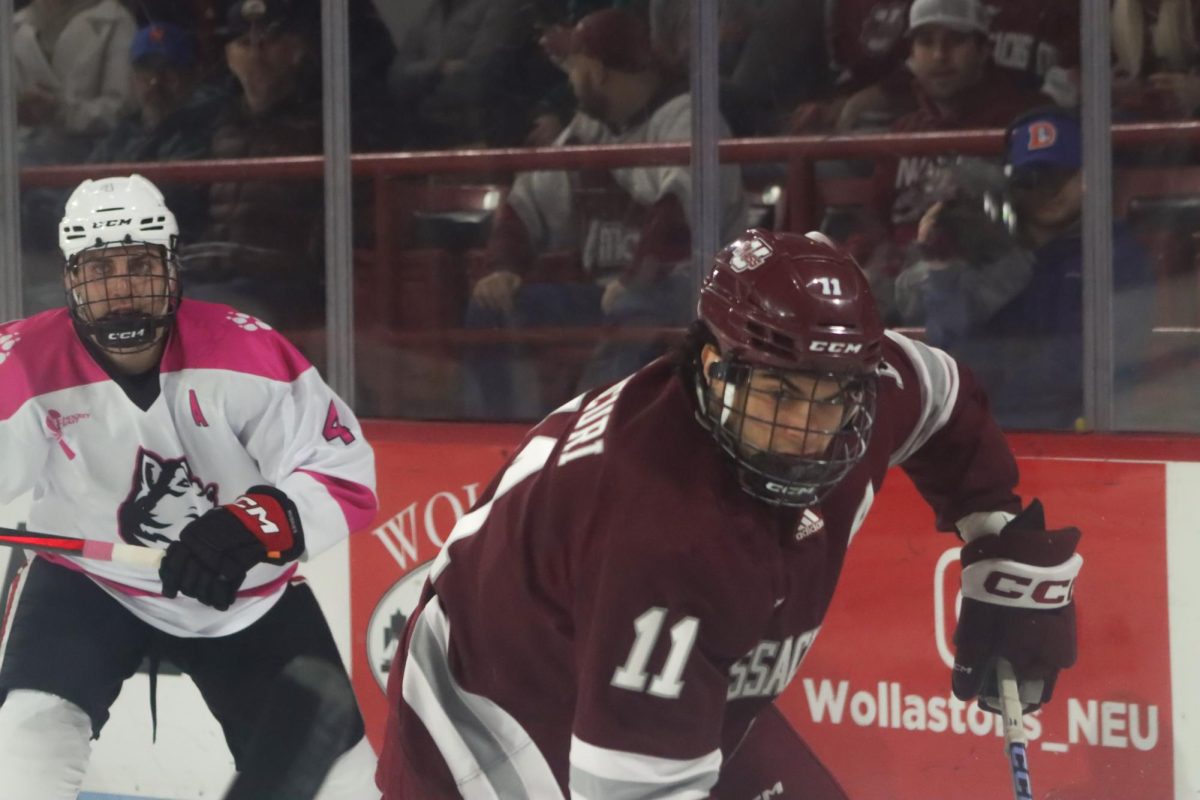
Achieving new, interactive viewing processes is an everlasting challenge for curators of contemporary art. On the University of Massachusetts campus, The University Museum of Contemporary Art presents a student collaboration at the forefront of this desire: The Cabinet of Curiosities virtual exhibition: Wunder UMass.
“Cabinet of Curiosities” is a rough translation of the word “Wunderkammer,” a term which originated in 16th century Europe and describes a conceptual way to collect and categorize various mediums of artwork. The eclectic cabinet has since resurged into the art world in recent decades.
In 2008, The Museum of Modern Art in New York City ran a Wunderkammer exhibit entitled, ‘A Century of Curiosities,’ referring to a Wunderkammer as “repositories for all manner of wondrous and exotic objects.”
The UMass Cabinet of Curiosities virtual exhibition is a unique Wunderkammer for viewers not only to view a collection but also to create their own. Effectively, the viewer is his or her own curator.
Former UMass students Rachel Mathison and Jacob Liverman, with the help of recent Computer Science graduate, Christohper Peterson, are the creators of Wunder UMass. Mathison and Liverman are art history majors who graduated in May 2015. They were assisted by graduate student Emily Devoe in the process.
Peterson wrote the code and executed the virtual exhibition according to the design envisioned by Mathison. Their idea was based on the current exhibition at the University Museum of Contemporary Art called “Anne Beresford – Ten Thousand Wonderful Things: A Conversation with University Collections.” The exhibition is part of the museum’s annual exhibition series “Dialogue with a Collection.”
Beresford’s exhibition features carefully selected items from collections across campus that remain open to the public including, art, biology, botany, anthropology, geology, the library’s Special Collections and University archives and the existing permanent collection at the museum itself.
Eva Fierst, the education curator at the UMCA explains that Beresford was given maximum freedom during the selection process. Meaning, she wasn’t bound to a guideline and could choose whatever items struck her artistic fancy. Some items featured in the exhibition include multi-colored Small Passerine Bird Eggs from the F. Seymour Hersey Egg Collection, obtained from the Natural History Collections in the Biology Department on campus.
Bereford’s own work are also featured in the installation from her series entitled, “Free 4All.” With the exception of Beresford’s work, every object featured in the exhibition can be found within a mile of the museum. That in itself is a rarity in art.
When creating the Cabinet of Curiosities, Mathison paralleled the process of Beresford and visited the same on campus collections, drawing out her personal choices for the virtual exhibition. There are some overlapping items across both collections as a result.
Mathison also intentionally incorporated some of the items from Beresford’s selections.
It’s as if the campus collections represent a grocery store, and Bereford and Mathison both went shopping; inevitably choosing some of the same things in both of their carts. That being said, Beresford’s finds represent a physical and tangible Cabinet of Curiosities whereas the exhibition created by the former students alongside, serves as a digital counterpart.
On Oct. 1, Mathison and Peterson hosted a presentation at the University Museum, describing their process of creating the Cabinet of Curiosities and demonstrated how to use Wunder UMass. Students and the general public can browse the items in the virtual collection and adorn the blank cabinet, desk and wall that serves as the default backdrop to a Wunderkammer.
The website can be accessed through the museum’s Facebook page and self-created cabinets can even be posted if one wishes. There are existing ones on the page to browse as well.
“The idea was to uncover and discover pieces of science and art that I had never seen before and share that with other people,” Mathison said.
She wanted to invite groups of people from campus who wouldn’t normally frequent the museum via the Wunder UMass exhibition. By incorporating art with science into what she refers to as, “a cohesive whole,” she sought to offer STEM students an artistic forum of relevance.
“We want to give students something that is hands on that they can walk away with,” Fierst said.
The student presentation was accompanied by a poetry reading at the museum and as the audience’s understanding of the Wunder UMass grew, it was thought of largely as poetry. The intimate and deliberate process of creating a Wunderkammer mirrors that of engineering a poem.
This interdisciplinary exhibition represents a campus-wide collaborative across departments and faculty, potentially fostering the future of the UMCA and campus partnerships.
The Beresford installation debuted at the museum on Sept. 25 and will be on view at the museum until Dec. 6.
Erica Garnett can be reached at [email protected] and followed on Twitter @GarnettErica.


















